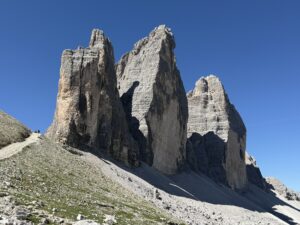Nestled in the heart of the Peruvian Andes, the Salkantay Trek offers a breathtaking alternative to the traditional Inca Trail. This 4-day journey takes you from serene high-altitude landscapes to the Amazon forest, ending at the iconic Machu Picchu.
Our Experience
As Peru was new to us, we booked the 4-day Salkantay trek with a local tour operator called Machupicchureservations. They offer multiple variations for the Salkantay trek. This 4-day Salkantay trek is tailored for efficiency, differing from the 5-day version in its pace and focus. While the 5-day trek allows for leisurely pursuits like soaking in the hot springs and trekking to the Llactapata viewpoint of Machu Picchu, the 4-day variant optimizes your time. This approach omits certain activities to ensure a timely arrival at Machu Picchu, which made it the ideal option for us with limited time. The day before the hike we slept at Hotel Hacienda Cusco Plaza.
Note: It’s really important to stay a few days in Cusco or even at higher altitudes to prevent altitude sickness. If you experience altitude sickness during the trek, you have two options: you can choose to continue the journey on a mule, which reduces physical exertion, or return to Cusco and recover.
Day 1 – Humantay Lagoon (5 hrs)
The adventure began early in Cusco, with hotel pickups starting around 4:30 AM. As our hotel was near the tour operator office, we gathered across the street. By 5:15 AM, we were on the road to Mollepata, a small town nestled in the Andes. The drive took about two hours, giving us time to wake up properly and take in the stunning morning views as we left Cusco behind.
In Mollepata, we stopped at a local restaurant for a breakfast buffet—a welcome start to the day. The food was simple but satisfying, perfect for fueling up before the trek. We also had time to grab any last-minute essentials from the small shops nearby. After about an hour, we continued our journey by car to Soraypampa, the official starting point of the trek.
Arriving in Soraypampa, we met the muleteers and their horses, who would carry the bulk of our gear for the trek. With daypacks on our backs and the rest of our luggage securely loaded onto the mules, we set off toward Humantay Lagoon, situated at an elevation of 4,200 meters.
The hike began gently, with a gradual ascent for the first hour. The final stretch to the lagoon was steeper and more challenging, but manageable with steady pacing. Once we reached the lagoon, the sight was breathtaking. The emerald-green water, framed by snow-capped peaks, felt like something out of a postcard. We spent about an hour there, taking in the views, snapping photos, and listening to our guide explain the cultural and ecological significance of the area.
The descent back to the campsite was easier on the legs, taking about an hour downhill followed by a flatter section. We arrived at Quiswarniyoc around 2:00 PM to a warm welcome from the cooking team, who had prepared a delicious lunch for us.
The campsite itself was impressive. It was set against the dramatic backdrop of Mount Salkantay, offering panoramic views that made us feel incredibly small as humans. After lunch, we were shown to our Mountain Sky Huts. The rest of the afternoon was free, which gave us time to explore the surrounding area or just relax. Some of us took short walks to stretch our legs, while others sat back to enjoy the views. Watching the shifting light on Salkantay as the sun lowered in the sky was mesmerizing.
Dinner was served around 6:00 PM, and afterward, the guide briefed us on what to expect for day 2, which would involve reaching the highest point of the trek—the Salkantay Pass at 4,700 meters.


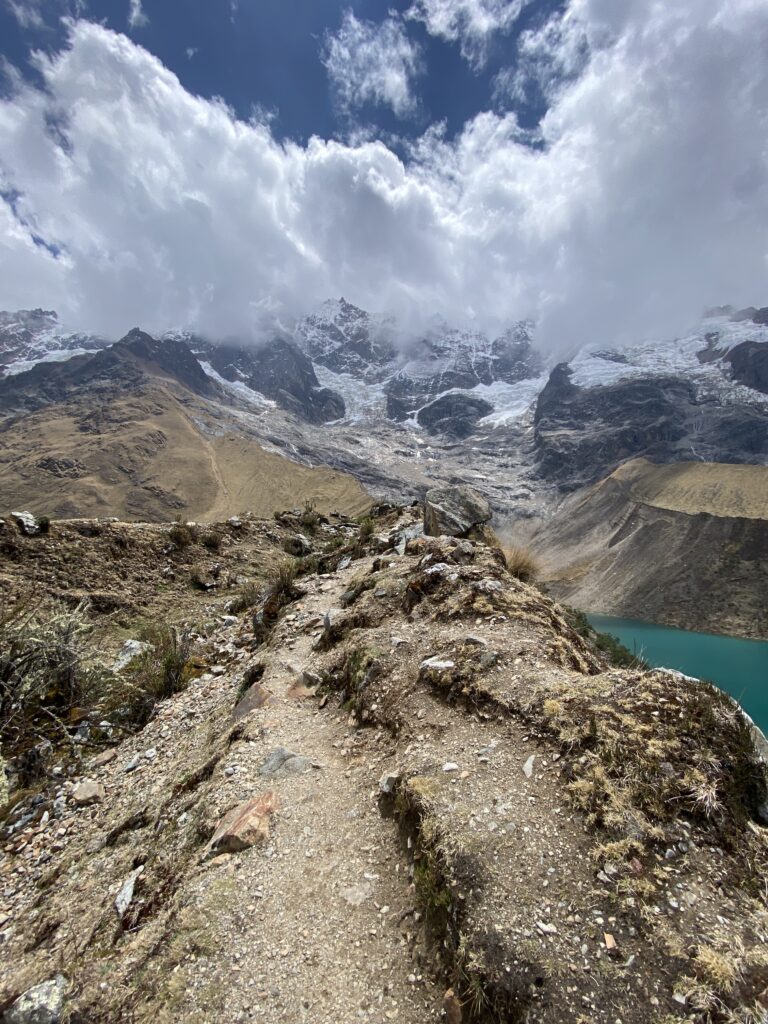
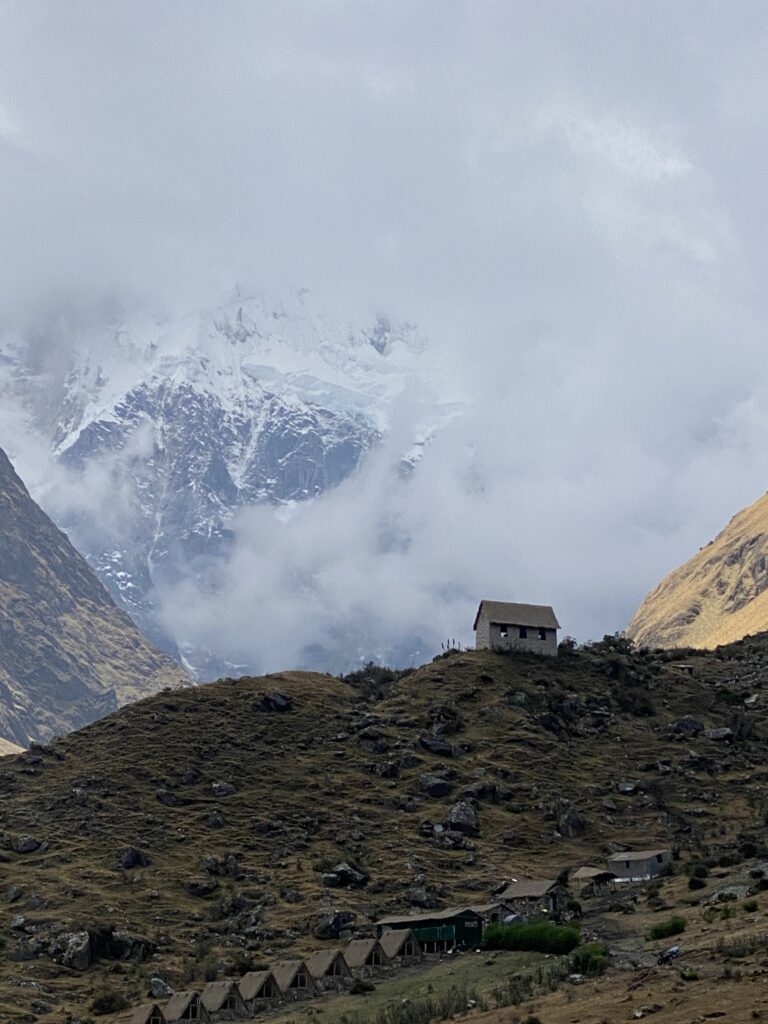




Day 2 – the Salkantay Pass (8 hrs)
Day two was the most challenging and rewarding leg of the trek. We ascended to the Salkantay Pass at an elevation of 4,700 meters, surrounded by towering glaciers and sweeping valleys.
The climb was steep and slow, but reaching the top felt triumphant. The panoramic views of Mount Salkantay were absolutely worth the effort—a mix of glacier peaks and rugged terrain. Our guide performed a small ceremony here, offering coca leaves to the mountain spirits, a tradition that added to the mystical atmosphere.
From the pass, we began a long descent into the forest. The change in scenery was dramatic as we transitioned from barren, rocky landscapes to lush, green trails lined with waterfalls and colorful flora. Once we arrived at Chaullay, we were picked up by busses to bring us to the campsite in Lucmabamba. If you would do the 5-day trek, you’ll walk this route on day 3. We spent the night in a lower-altitude campsite, enjoying a brand-new campsite featuring stunning glass igloos.
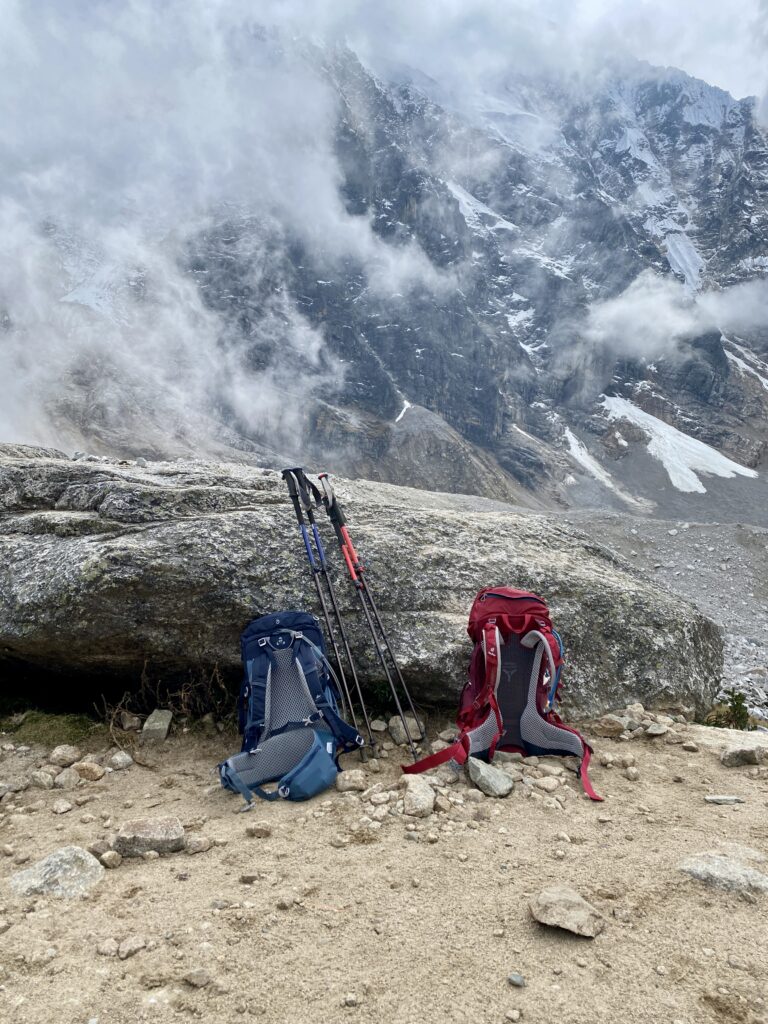




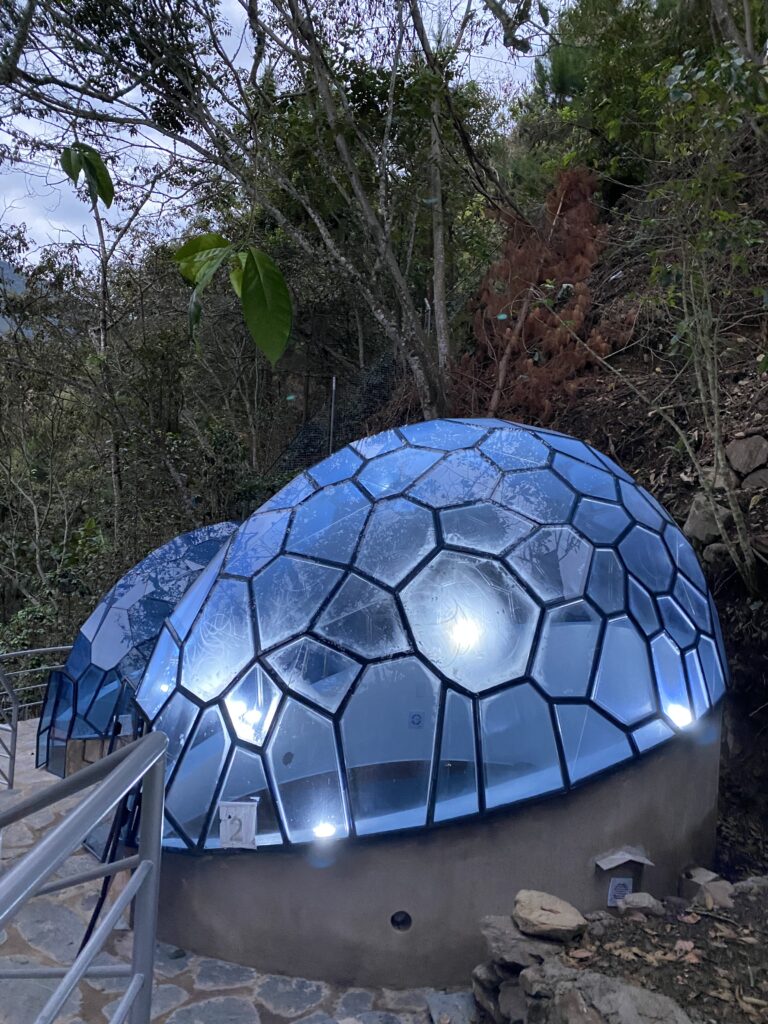





Day 3 – Through Santa Teresa Valley to Aguas Calientes (8 hrs)
Our third day was a walk through the Santa Teresa Valley, with the occasional glimpse of Machu Picchu from afar. The terrain was mostly flat, a welcome relief after the previous day’s exertions, but the scenery remained stunning.
After a leisurely lunch, we walked for about three hours alongside the train tracks to Aguas Calientes, the gateway to Machu Picchu. You’ll hear the train horn most of the time echoing in the distance, because a lot of people hike on the rails itself, but the rails are still used.
Arriving in Aguas Calientes felt like stepping back into civilization. We celebrated with a hot shower, some local cuisine, and an early night in preparation for the grand finale—exploring Machu Picchu at sunrise the next morning.



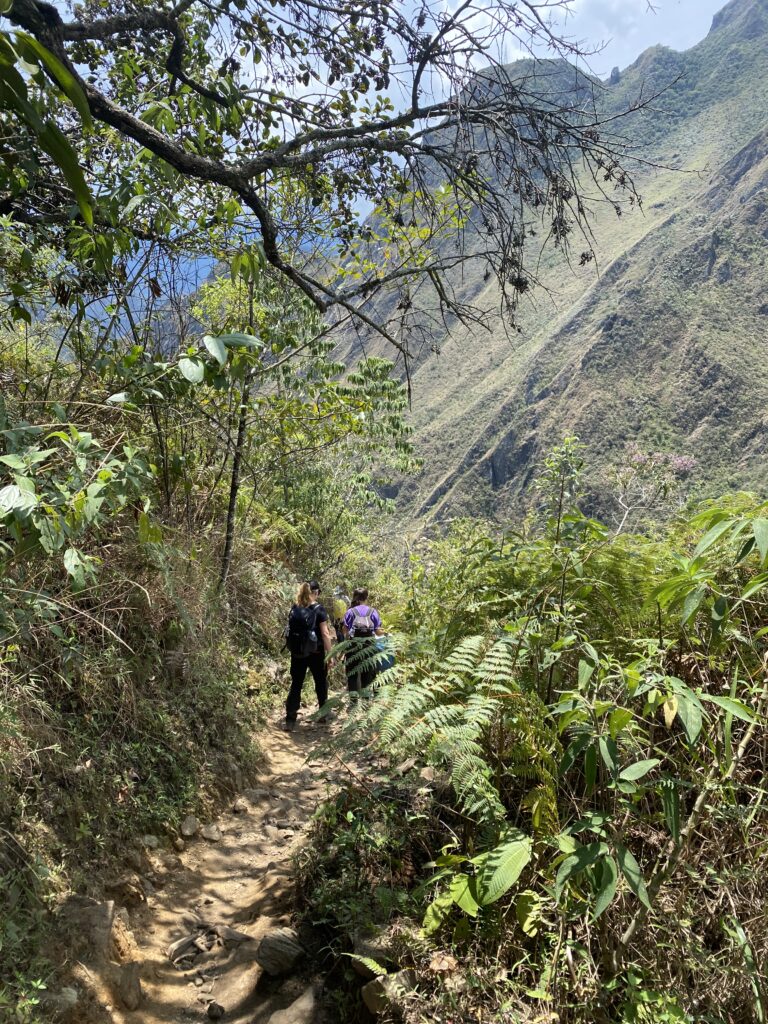
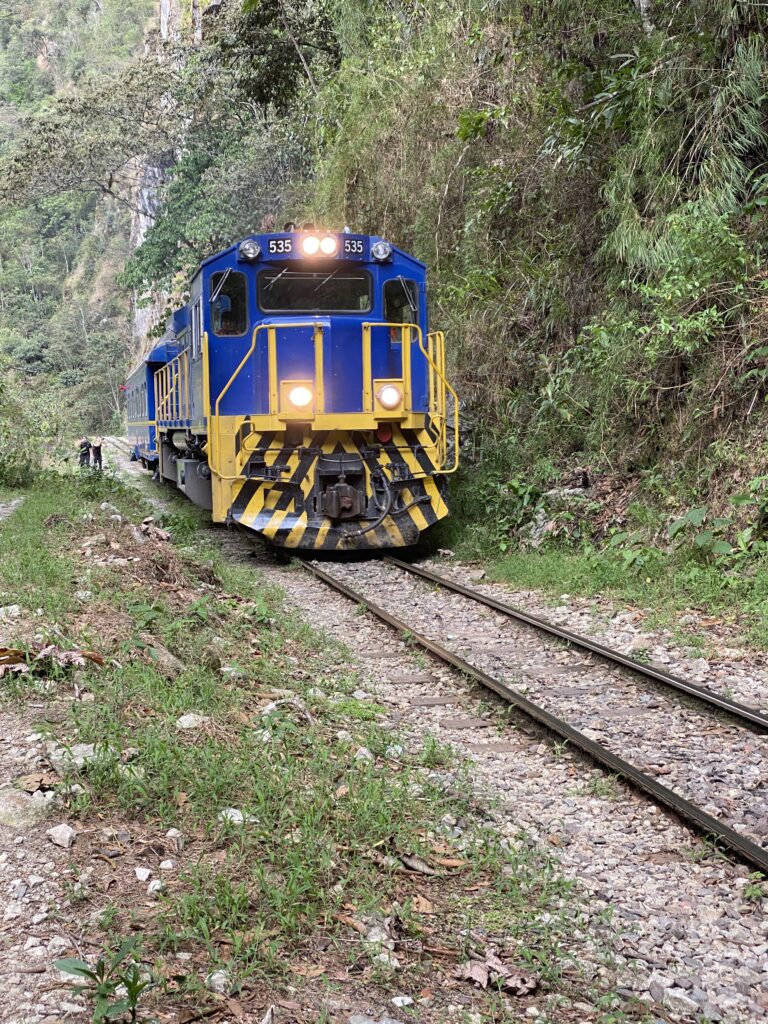







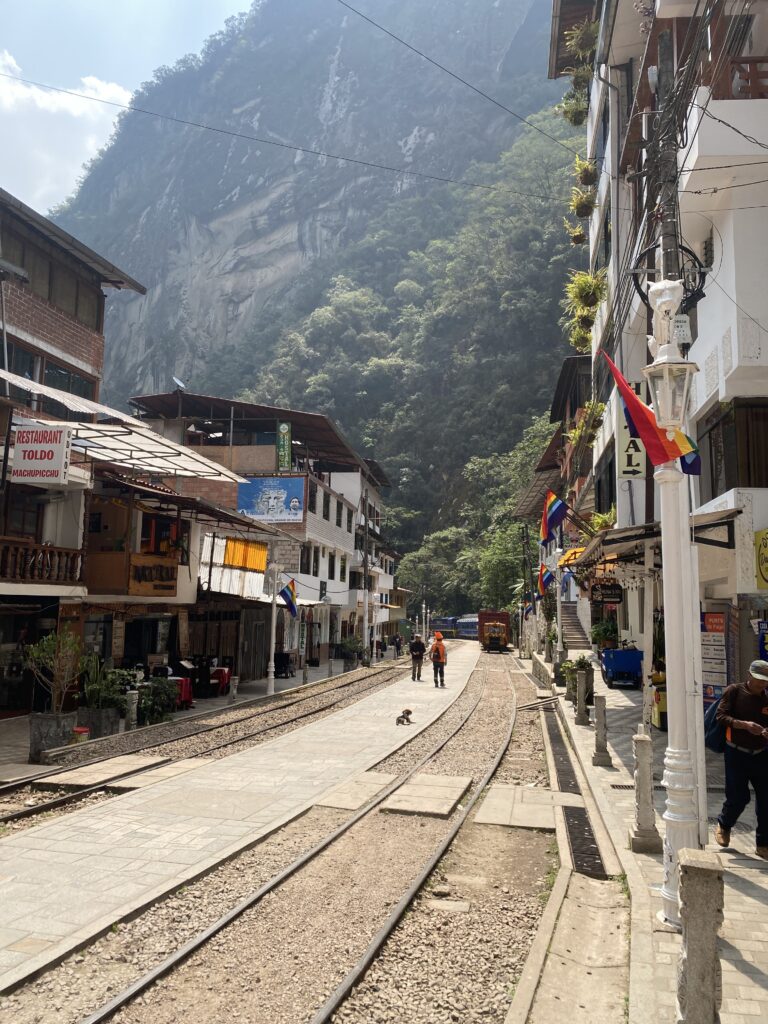
Day 4 – (4hr)
We enjoyed a quick breakfast at the hotel before setting off. By 4:30 a.m., armed with our headlamps, we began our ascent towards the iconic Inca citadel.
The hike from Aguas Calientes to Machu Picchu took us about 1.5 hours, starting with 30 minutes of flat terrain before transitioning to a steep climb via historic stone steps. The ascent was challenging but of course also rewarding to finally see this UNESCO world heritage site. The steps themselves were a humbling reminder of the ancient paths walked by the Incas.
For those preferring a gentler approach, the operator provided an alternative: a bus ride to Machu Picchu’s entrance. These buses depart Aguas Calientes starting at 5:30 a.m., and for $12 per trip, they offer a comfortable 25-minute journey up the winding mountain road.
Our goal was to reach the entrance by 6:00 a.m., just as the gates opened. After a brief check-in at the main control—where tickets, passports, and, for students, IDs are verified—we stepped into the sacred grounds of Machu Picchu with our Circuit 3 tickets. The morning light added a magical quality to the moment, enhancing the sense of wonder as we ascended to the upper viewpoints for the iconic panoramic photos.
Our guide led us on an enriching 2.5-hour tour, sharing the history, architecture, and cultural significance of the citadel. Learning about Machu Picchu’s advanced engineering, spiritual importance, and its mysterious abandonment brought the ruins to life.
After hiking or taking a short bus ride back to Aguas Calientes, we had time to explore the town and enjoy lunch before boarding the 3:30 p.m. train to Ollantaytambo. From there, a car transfer brought us back to Cusco by 6:30 p.m.








What to pack
- Hiking poles (or book through tour provider)
- 2-2,5L camelbag (no plastic bottles allowed)
- Backpack
- Sunglasses
- Warm clothes (it can get <0 degrees Celcius by night)
- Powerbank
- Some energy bars (porters take care of the main meals)
- Sleeping essentials (rent a sleeping bag by tour provider)
- Fresh set of clothes
GPX Route
I’m a big fan of Komoot, so here you can find the route with distance, time, height differences all-in-one of the entire route:
- Day 1: Soraypampa to Humantay Lagoon
- Day 2: Humantay Lagoon to Chaullay
- Day 3: Lucmabamba to Aguas Calientes
- Day 4: Aguas Calientes to Machu Picchu




